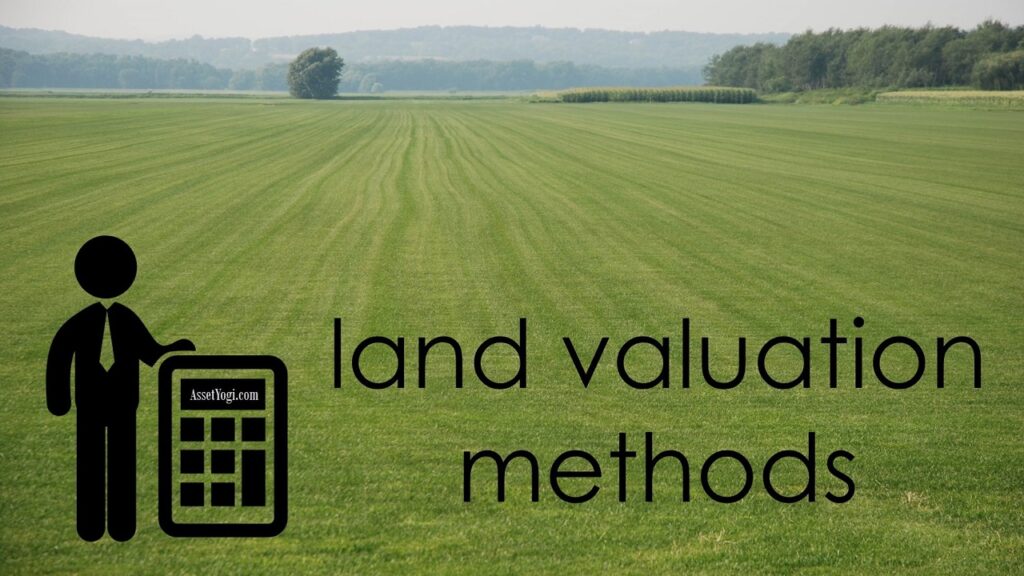LAND VALUATION METHODS & FACTORS FOR VALUATION OF LAND
Land Valuation Methods & Factors for Valuation of Land
Land valuation is a crucial process in the real estate industry, as it forms the foundation for various financial decisions, including buying, selling, leasing, and developing land. Valuing land accurately requires a comprehensive understanding of the property’s characteristics and the factors influencing its worth. Several methods are used to determine the value of land, each taking into account different aspects of the property and its surroundings. In this article, we will explore the various land valuation methods and the key factors that contribute to the valuation of land.
Methods of Land Valuation:
- Comparable Sales Method (Market Approach): This method relies on recent sales data of similar properties in the same area to estimate the value of a piece of land. It assumes that properties with similar characteristics and in the same location have similar market values. Appraisers collect data on recently sold properties and make adjustments based on differences in size, location, zoning, and other relevant factors.
- Income Capitalization Method (Income Approach): Primarily used for income-generating properties, this method calculates the land’s value based on the income it can generate over time. The approach involves estimating the property’s potential income and applying a capitalization rate to determine its value. The capitalization rate reflects the return an investor expects to receive from the property.
- Cost Approach: This method estimates the land’s value by calculating the cost to replace it with a similar piece of land. It considers factors like land size, shape, and topography, as well as the cost of preparing the land for use (e.g., clearing, grading). The cost approach is often used for unique properties where comparable sales data may be scarce.

Factors Influencing Land Valuation:
- Location: Arguably the most critical factor, the land’s location significantly impacts its value. Proximity to amenities, schools, transportation hubs, and economic centers can drive up land values. Desirable neighborhoods with low crime rates and access to essential services generally have higher land values.
- Zoning and Land Use: The permitted use and zoning regulations of a property can greatly affect its value. Land designated for commercial or residential use, for example, will have different values. Zoning restrictions, such as height limits and setbacks, can also impact land value.
- Size and Shape: Larger parcels of land tend to have higher values, but irregularly shaped parcels might have lower values due to limitations on their use. The shape of the land can affect how efficiently it can be developed or utilized.
- Topography and Terrain: The physical characteristics of the land, including its slope, elevation, and soil quality, can influence its value. Flat, well-drained land is often more valuable because it’s easier to develop compared to steep or flood-prone terrain.
- Infrastructure and Utilities: The availability of infrastructure like roads, utilities (water, electricity, sewage), and other amenities can significantly impact land value. Access to these services enhances a property’s development potential.
- Market Demand: The current demand for land in a specific area also plays a crucial role. Areas experiencing rapid population growth or economic development are likely to have higher land values due to increased demand.
- Environmental Factors: Natural features like waterfront access, scenic views, and proximity to parks can influence land value. However, environmental constraints such as wetlands or flood zones may reduce a property’s value.
- Economic Trends: Larger economic trends, such as interest rates and overall market conditions, can affect land values. A booming economy might drive up demand and raise land values, while economic downturns can have the opposite effect.
In conclusion, accurately valuing land requires a comprehensive analysis of various factors that contribute to its worth. The choice of valuation method often depends on the property’s characteristics and the purpose of the valuation. By considering location, zoning, size, infrastructure, and other critical factors, appraisers can arrive at a fair and realistic estimate of a piece of land’s value, enabling informed decision-making in the real estate market.


